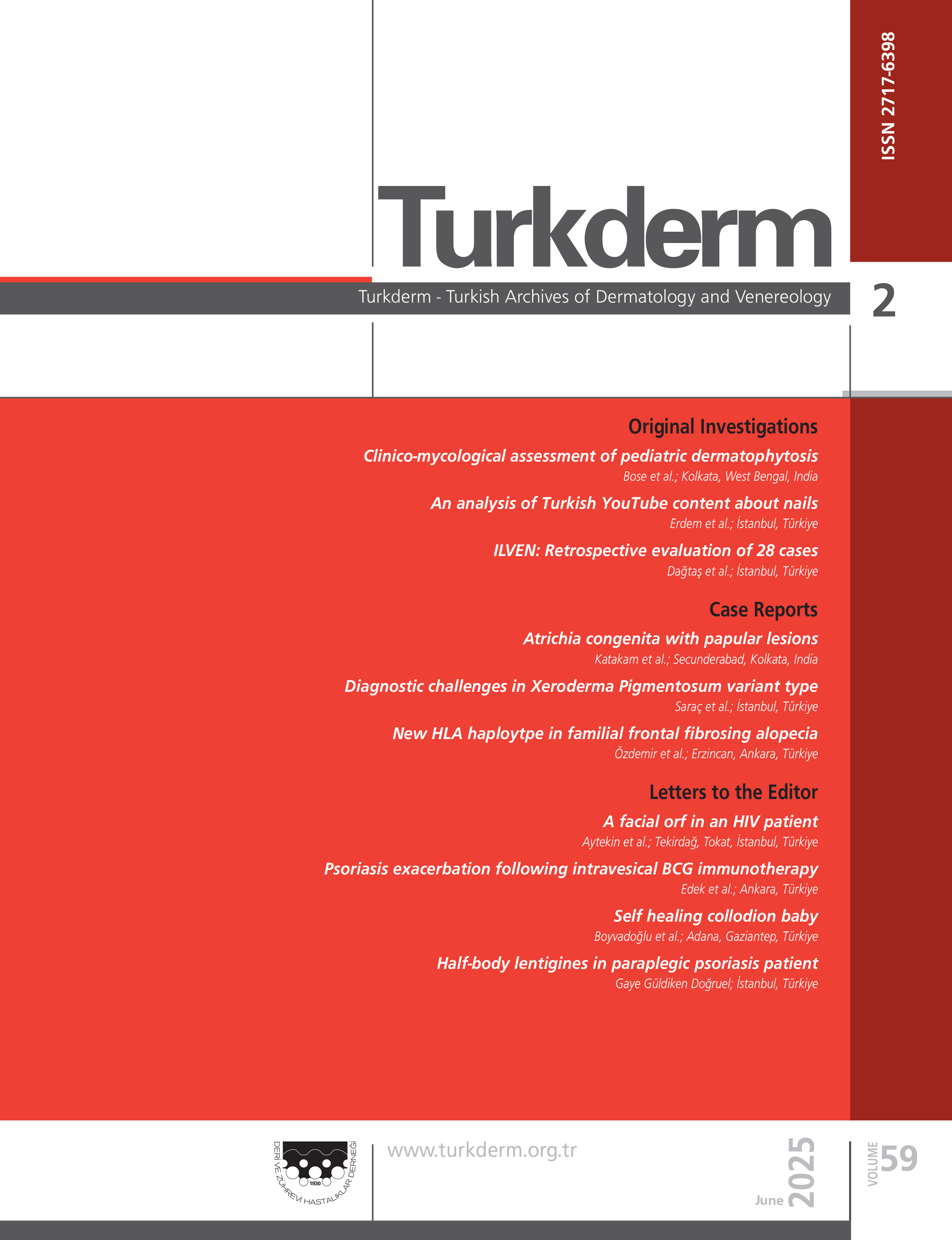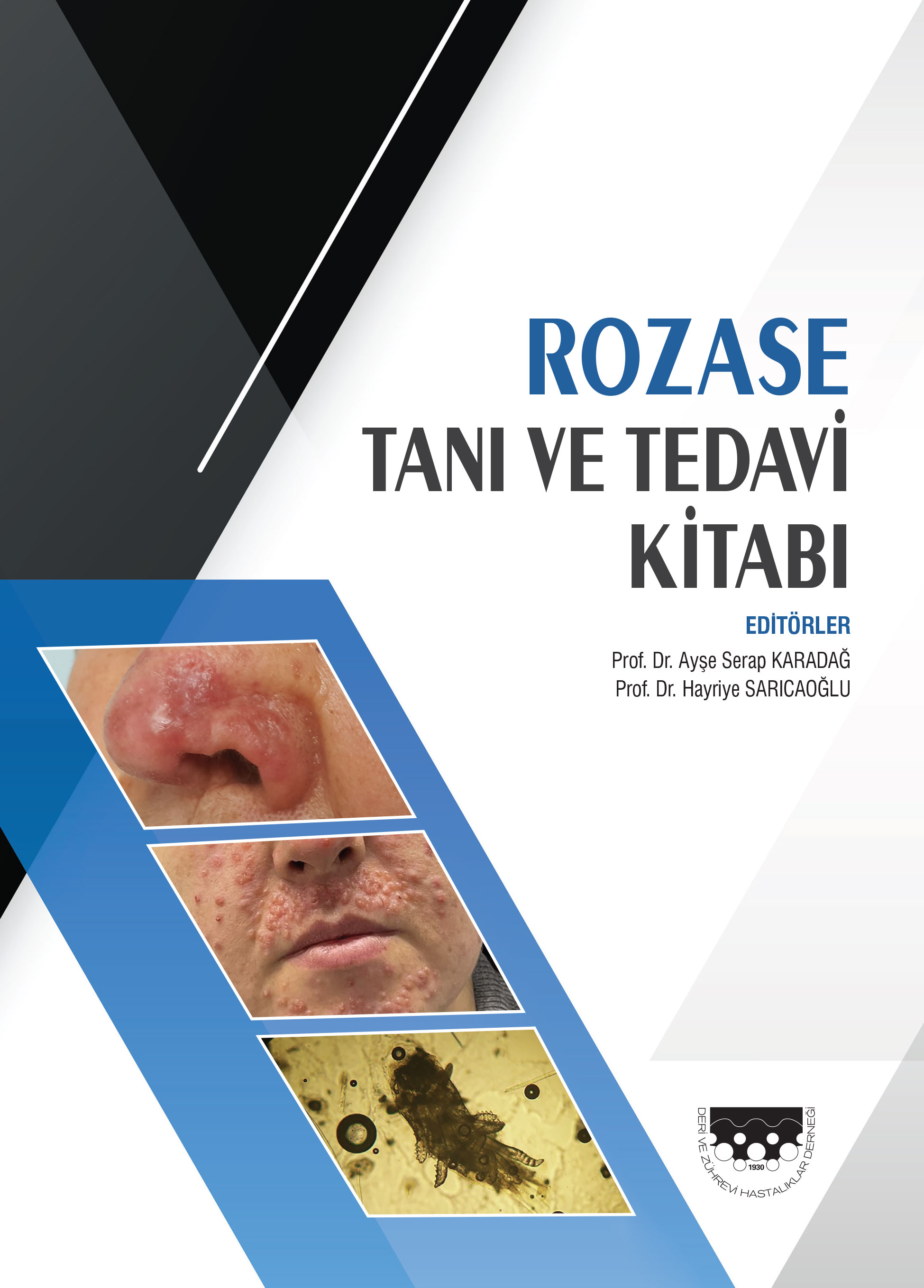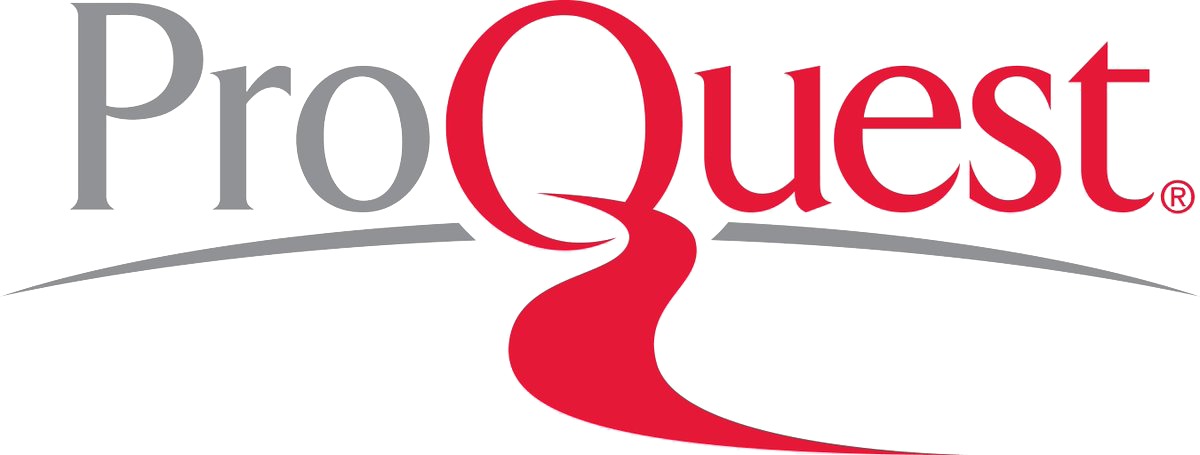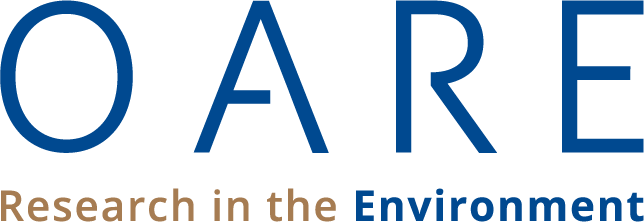Volume: 49 Issue: 2 - 2015
| EDITORIAL | |
| 1. | Editorial Emine Derviş Page I |
| REVIEW ARTICLE | |
| 2. | Does topical isotretinoin exposure during pregnancy increase the risk of congenital malformations? İsmail Yılmaz, Yusuf Cem Kaplan, Barış Karadaş, Tijen Kaya Temiz, Şemsettin Karaca doi: 10.4274/turkderm.24572 Pages 92 - 94 A 34-year-old patient learned that she was 7 weeks pregnant while she was using topical isotretinoin + erythromycin gel for acne treatment and referred to Izmir Katip Celebi University Teratology Information Service for information regarding the risk of teratogenicity. Systemic use of isotretinoin is well-known for its teratogenic effects and case reports suggesting possible teratogenic effects regarding topical exposure to retinoids in pregnancy exist in the literature. However, findings reported in four prospective controlled studies do not suggest an increased congenital malformation risk in case of inadvertent exposure during pregnancy. This manuscript aims to give a summary and evaluation of available data for counseling pregnant patients regarding the possible teratogenic risk of inadvertent topical isotretinoin exposure during pregnancy. It also aims to emphasize the importance of increasing communication between pregnant patients, clinicians and teratology information services for the benefit of mother and unborn. |
| ORIGINAL INVESTIGATION | |
| 3. | Development of stria gravidarum in pregnant women and associated factors Arzu Kılıç, Seray Çakmak, Cemal Atalay, Evşen Atıcı, Olcay Er, Kadriye Yakut, Ülker Gül doi: 10.4274/turkderm.92604 Pages 95 - 100 Background and Design: Stria gravidarum is a cosmetically disfiguring condition that is commonly seen in pregnancy. Various parameters such as age of mother, genetical factors like family history, skin colour, various hormonal changes seen in pregnancy, weight gain and physical features of newborn are accused in the development. The studies reported primarily include primigravidas. In this study, the presence of stria gravidarum and associated risk factors are aimed to be investigated. Materials and methods: All attenders' gestastional week, prepregnancy and delivery weights, height, family history of stria, smoking habits and/or alcohol use during pregnancy, any use of cream and/or oil for preventing stria, delivery way, newborn's gender, height, weight and head circumference were recorded. In both primigravidas and multigravidas, factors that could be associated with stria gravidarum were investigated by Spearman'scorrelation analysis and risk factors in the development of stria gravidarum by logistic regression analysis. Results: Fifty of 128 pregnant women were primigravidas and 78 were multigravidas. In primigravidas, a correlation was detected between family history of stria, non-usage of cream and/or oil during pregnancy,head circumference of newborn and development of stria gravidarum while in multigravidas, a correlation is detected between prepregnancy weight, delivery weight, smoking during pregnancy, not using of any cream and/or oil during pregnancy, family history of stria, head circumference of newborn, weight of newborn and stria gravidarum development. Presence of family history of stria and not using of any cream and/or oil were found to be risk factors in development of stria gravidarum in all pregnant women by logistic regression analysis. Conclusion: Both genetical and physical factors are thought to play a role in development of stria gravidarum; however, further broad scale studies with larger samples including both primigravidas and multigravidas are needed to be carried out. |
| 4. | Comparison of weekly low-dose and high-dose incremental protocols of narrow band ultraviolet B therapy for psoriasis Mehtap Ünlü Bıçak, Turna İlknur, Sevgi Akarsu, Filiz Yücel, Ayşe Şebnem Özkan doi: 10.4274/turkderm.01878 Pages 101 - 106 Background and design: Considering the probable long-term side-effects of narrowband UVB (NB-UVB) therapy, various studies have been conducted to provide more effective and reliable protocols by applying the different initial doses, numbers of sessions or dose increments. The aim of this study is to compare the clinical effectiveness of weekly low-dose increments and weekly high-dose increments of NB-UVB therapy in psoriasis. Materials and methods: Twenty-nine patients with psoriasis vulgaris underwent NB-UVB therapy with a weekly low-dose (20%) increment protocol (group 1; n=14) or weekly high-dose (40%) increment protocol (group 2; n=15). Patients were monitored weekly for 12 weeks and evaluated by the Psoriasis Area Severity Index (PASI). Results: The PASI scores prior to the therapy and during the 12-weeks of therapy for each week between the groups were compared and no statistically significant difference was found except week 12. The mean PASI scores at week 12 was significantly lower in patients from group 2 than in patients from group 1 (p=0.045). The mean number of patients and therapy sessions required with ≥50%, ≥75% and ≥90% PASI reduction did not differ between both groups. Although comparison of the two groups according to the mean cumulative doses with ≥50% and ≥90% PASI reduction did not reveal a statistically significant difference; however, those of patients with ≥75% PASI reduction and at the end of the 12-week therapy were significantly higher in the group with a weekly high-dose increment than in the group with a weekly low-dose increment (p=0.014 and p=0.00, respectively). Conclusion: Although we are aware that our results may need to be supported with large-series studies, we suggest that a weekly low-dose increment regime of NB-UVB therapy is preferable in the treatment of psoriasis as it produces nearly similar effects as a weekly high-dose increment regime but with the lower cumulative doses. |
| 5. | Efficacy of 0.1% tacrolimus ointment in chronic plaque psoriasis: A randomized double-blind placebo-controlled study Seval Doğruk Kaçar, Emel Bülbül Başkan, Naile Bolca, Şadıman Balaban Adım, Emre Kaçar, Hayriye Sarıcaoğlu, Şükran Tunalı doi: 10.4274/turkderm.65632 Pages 107 - 111 Objective: Despite the development of effective systemic treatments and new biological agents for psoriasis nowadays, topical medications are still the mainstay of treatment. Topical calcineurin inhibitors are currently used in various skin diseases. We investigated The efficacy and safety of tacrolimus, which is an alternative in topical treatment, is investigated in comparison with the present medications in plaque psoriasis. Material and Methods: This prospective double-blind plasebo-controlled study was conducted in 24 patients with diagnosis of plaque psoriasis who were seen in X University Hospital dermatology outpatient clinic. 0.1% tacrolimus ointment, 0.1% mometasone furoate ointment, 0,005% calcipotriol ointment and plasebo in encrypted bottles, were randomly applied in test chambers under occlusion, in every other day, during 19 days, to 27 psoriatic plaques. Clinic sum scores, side effects, epidermal thickness measured by superficial ultrasound were noted before and after treatment in all microplaques. Besides histopathologic scoring and epidermal thickness were measured in 9 patients at the end of study. Results: The clinic sum scores and ultrasonographic epidermal thickness at the end were both significantly lower than the beginning values in all microplaques (p˂0.05). The reduction in these two values with tacrolimus were significantly higher than plasebo (p˂0.001), but no difference with calcipotriol (p=0.287, p=0.813, respectively). On the other hand, the reduction in these values with mometasone were significantly higher than tacrolimus (p˂0.05). Mometasone furoate was the most effective when the difference of total histopathological score and epidermal thickness of the three ointments from plasebo at the end were compared. Conclusion: Tacrolimus ointment is an alternative topical medication in plaque psoriasis under occlusion. Occlusion in practice requires patients compliance. Thus studies to find a a new formulation that will increase absorption of drug from thick psoriatic plaques are necessary. |
| 6. | Mean platelet volume, neutrophil to lyphocyte ratio and platelet to lymphocyte ratio in psoriasis Mehmet Ünal, Adem Küçük, Gülbahar Ürün Ünal, Şükrü Balevi, Hüseyin Tol, Caner Aykol, Mehmet Uyar doi: 10.4274/turkderm.57984 Pages 112 - 116 Background and Design: It has been demonstrated that ratio of neutrophil and platelet count systemic inflammation and is associated with prognosis of many cardiovascular diseases, malignates and chronic inflammatory diseases.As far as it is known, there are no studies investigating neutrophil/lymphocyeratio(NLR), platelet/lymphocyte ratio(PLR) and mean platelet volume(MPV) values together within the context of psoriasis, a chronic and systemic inflammatory disease. Materials and Methods: 320 patients followed up in our polyclinic with psoriasis vulgaris and 200 healthy persons were evaluated in the study. Results: Leukocyte, neutrophil, platelet, MPV, NLR and PLR values in patients with psoriasis were significantly higher, and lymphocyte count, on the other hand, was significantly lower than those of the control group. No significant difference was found between MPV, NLR and PLR values of patients with or without a family history, nail and joint involvement. Conclusions: These parameters may be made use of as cheap and easily applicable methods in predicting which psoriasis patients are under the risk of cardiovascular disease. PLR is a better inflammation marker than MPV and NLR in patients with psoriasis. We did not observe a significant relationship between MPV, NLR and PLR values and such disease characteristics as severity of disease, joint involvement, nail involvement and duration of disease in patients with psoriasis. So, we believe that there is little information on the extent to which MPV,NLR and PLR might be useful regarding these characteristics. |
| 7. | Efficacy and safety of rituximab in the treatment of refractory pemfigus vulgaris Aslı Bilgiç Temel, Ayşe Akman Karakaş, Erkan Ergün, Birgül Özkesici, Nilay Uğurlu, Berna Nazlım, Saliha Koç, Ayşegül Erat, Selen Bozkurt, Özlem Dicle, Erkan Alpsoy, Ertan Yılmaz, Soner Uzun doi: 10.4274/turkderm.86402 Pages 117 - 124 Background and Design: Pemphigus vulgaris (PV) is a severe, chronic, potentially life-threatening autoimmune blistering disease that affects the skin and mucous membranes, associated with the loss of cell-cell adhesion and blister formation. Systemic steroids in combination with immunosuppressive agents are the mainstay of therapy in pemphigus. Rituximab is a chimeric monoclonal anti- CD20 antibody, has been tried increasingly for the treatment of PV. Objective: We sought to test the efficacy and safety of rituximab as an adjuvant therapy by retrospective analysis of clinical and immunological data of patients. Method: A retrospective analysis is presented of 13 patients with refractory pemphigus vulgaris who were treated with rituximab at Akdeniz University Hospital, Dermatology and Venereology Department, Bullous Disease Unit. We evaluated clinical and immunological data with last treatments. Results: Patients were treated with one cycle of two biweekly infusions of rituximab at a dose of 1000 mg on days 1 and 15, except one received four doses of 375 mg / m2 intravenously weekly. The mean follow-up time was 18.5 months. All patients had a decrease in antibody titers or antibodies were completely undetected after treatment. Rituximab use resulted in a significant reduction in steroid dosage during follow-up. At the end of the follow-up period, 7 patients achieved complete disease remission without therapy, 1 patient achieved partial disease remission without therapy, 2 patients achieved complete remission on minimal therapy, 1 patient achieved complete remission on therapy, 1 patient achieved partial remission on minimal therapy, and one patient had no follow-up. Rituximab was well tolerated by all patients. Clinical relapse had seen 53.8% by the mean period of 13.8 months. Relapses have been managed with additional infusions of rituximab. Conclusion: Rituximab is beneficial in the management of refractory PV, induces prolonged clinical remission and a steroid sparing effect. |
| 8. | A retrospective study of 102 patients with pemphigus Mahmut Sami Metin, Okan Kızılyel, Ömer Faruk Elmas, Handan Bilen, Necmettin Akdeniz, Muhammet Çalık, Mustafa Atasoy doi: 10.4274/turkderm.94715 Pages 125 - 128 Background and Design: Pemphigus is a severe and life-threatening chronic autoimmune mucocutaneous blistering disease. The aim of this study was to evaluate and analyze the course, prognostic factors and epidemiological, clinical and therapeutic features of pemphigus in patients followed between 2004 and 2013. Materials and Methods: We performed a 10-years retrospective study of patients diagnosed with pemphigus in Erzurum. The parameters evaluated include age, sex, diagnostic methods, duration of hospitalizations, distribution of lesions, duration and therapeutic doses. Results: The results showed that the estimated annual incidence rate was 1.31 cases per 100,000 person-years. The male to female ratio was 1.081. The mean age at onset of the disease was 48 years (range, 795 years). Thirty six patients had only skin lesions and sixty-six cases had both skin and oral mucosal lesions. The majority of the patients (58.8%) with pemphigus were treated with middle or high-dose corticosteroids (40160 mg/day). Conclusions: Pemphigus vulgaris is the most common clinical subtype in Erzurum and the mean age of the disease onset in the present study was found to be a decade earlier than in other parts of the world. The patients with both oral mucosa and skin involvement required higher corticosteroid doses and longer hospitalization time when compared to the patients with oral mucosa involvement alone. |
| 9. | Patch testing for allergic contact dermatitis: Three years retrospective results in Tekirdağ Gamze Erfan, Mehmet Emin Yanık, Şule Kaya, Serkan Kalaycı, Kaan Taşolar, Mustafa Kulaç doi: 10.4274/turkderm.15689 Pages 129 - 133 Background and Design: Allergic contact dermatitis is a delayed type hypersensitivity reaction to allergens in individuals who were sensitized with same allergens before. The causative allergens may change in time as well as vary among geographical and population based differences. Materials and Methods: The characteristics of 169 patients-107 (63.3%) male, 62 (36.7%) female, who patch tested between 2011- 2014 with allergic contact dermatitis diagnosis and test results were retrospectively analysed. Results: The mean age of all patients who had the most frequent occupation as service sector/house wife (26.6%) were 41.06 years and the mean disease duration of all patients was 19.5 months. The most frequent localization of disease was hands (n: 105,%73) and %50.3 of patients had positivity with at least one allergen. The most frequent seven allergens with positivity were nickel sulfate (n: 50, %29.6), cobalt chloride (n: 23, %13.6), potassium dichromate (n: 22, %13), sesquiterpene lactone mix (n: 18, %10.7), thiuram (n: 10, %5.9), clioquinol mix (n: 10, %5.9) and 4-tert-butilfenol formaldehyde resin (n: 10, %5.9), respectively. On the other hand in all patients there were no positivity with N-Isopropyl-N-phenyl-4-phenylenediamine, epoxy resin, balsam of peru, formaldehyde, quaternium-15, primin, tixocortol-21-pivalate, fragrance mix-2. Conclusion: In comparison of this study which first reports patch test results of patients in Tekirdağ-a city in Trakya region and other studies that report patch test results of different regions of our country; the mean age of patients of present study were older and there were similar results for occupations and localization of disease in between eastern region and present study. We believe that further studies are needed to specify allergen characteristics of Trakya region using multicenter studies, which include other cities as well. |
| 10. | Insulin resistance and metabolic syndrome in female androgenetic alopecia Selma Salman, Evren Odyakmaz Demirsoy, Nilgün Bilen, Zeynep Cantürk, Aysun Şikar Aktürk, Dilek Bayramgürler, Rebiay Kıran doi: 10.4274/turkderm.59219 Pages 134 - 138 Background and design: In this study, we aimed to identify whether there was an association of insulin resistance and metabolic syndrome with androgenetic alopecia (AGA) in reproductive women. Materials and methods: We investigated insulin resistance and metabolic syndrome, which is known to be associated with insulin-resistance, in 55 females with AGA (Ludwig I and above) who were under 45 years of age and 50 age-matched woman without AGA. We used homeostasis model assessment (HOMA) index and quantitative insulin sensitivity check index (QUICKI) to identify insulin resistance. The cut-off value for HOMA was accepted as 2.7. The diagnosis of metabolic syndrome was established using the National Cholesterol Education Program Adult Treatment Panel III (NCEP ATP III) criteria. Results: Serum fasting blood glucose levels were significantly higher in females with AGA than in controls (p<0.05). According to HOMA index, insulin resistance was determined in 11 of 55 (20%) patients in the AGA group, whereas it was identified in only 6 of 50 (12%) controls. The difference between the two groups was not statistically significant (p>0.05). The two groups were also compared for the levels of QUICKI. The mean levels of QUICKI in patient control groups were 0.36±0.04 and 0.36±0.03, respectively. The difference between the groups was not statistically significant (p>0.05). Finally, when the two groups were assessed according to the NCEP ATP III-criteria, metabolic syndrome was identified in 5 out of the 55 (9.1%) patients in the AGA group whereas none of participants had metabolic syndrome in control group. The difference between these groups was not statistically significant (p>0.05). Conclusion: In our study, it was shown that there was no significant relationship of insulin resistance and metabolic syndrome with AGA in women. |
| 11. | The prevalance of demodex species in faculty of health science students Hafize Özdemir, Edip Özer, Sevil Özdemir, Mehmet Alkanat doi: 10.4274/turkderm.72558 Pages 139 - 141 Objective: Demodex folliculorum and D. brevis are acari that can be found in hair follicles and sebaceous glands of the skin, especially on face of human. This study was aimed to reveal prevalance of Demodex species in faculty of health science students. Methods: Skin surface biopsy was performed in subjects who completed socio-demographic questionnaire. The samples were examined under a microscope for demodex species. Results: In this study, at least one species of demodex was found to be positive in 47.4% of 270 students. Coexistence of D. folliculorum and D. brevis was observed in most of the subjects (50.8%). In all positive cases, the presence of only Demodex folliculorum or brevis was found in 29.7% and 19.5% respectively. There was no relationship between variables and demodex prevalence. Conclusion: This study showed that demodex species infestation is a common but an ignored health problem in faculty of health science students. |
| 12. | Efficacy of minimal ablative fractional Er: YAG laser in the treatment of acne scars: A retrospective study Erol Koç, Selçuk Toklu, Serbay Gürel, Yıldıray Yeniay, Ercan Çalışkan, Gürol Açıkgöz doi: 10.4274/turkderm.88965 Pages 142 - 146 Background: Acne scar is a complication of inflammatory acne due to the damage of skin. Various therapeutic modalities have been used for the treatment of acne scars. Among these treatments, minimal ablative fractional Er: YAG (Erbium: yttrium-aluminum-garnet) laser is a popular treatment modality for the improvement of acne scars. In this study, we restrospectively analysed efficiency and tolerability of minimal ablative fractional Er: YAG laser therapy in the treatment of acne scars. Materials and Methods: Seventy one patients with acne scars treated with minimal ablative fractional Er: YAG laser in our clinic between November 2011 and April 2013 were retrospectively evaluated. Treatment parameters, demographic features and before and after pictures of the lesions were investigated from patients records in order to evaluate efficency of Er: YAG laser therapy. Patients photographs before and after treatment were compared. Clinical response was graded according to the percentage improvement. Side effects observed during treatment and in follow-up visits were evaluated from patients records. Results: Acne scar types included in the study were icepick (n=32, 45.1%), rolling (n=24, 33.9%), shallow boxed (n=7, 9.8%) and deep boxed (n=8, 11.2%). Clinical improvement rates evaluated as 1.4% minimal, 38.1% moderate, 47.8% good and 2.7% excellent. Adverse effects were 16.8% erythema that lasted more 3 days, 4.2% postinflammatory hyperpigmentation and 7.0% acne aggravation. Clinical improvement (3.2, good-excellent) and patient satisfaction rates (2.6, good-excellent) for icepick type scars were very high. Similarly in shallow boxed scar types clinical improvement (2.8, good) and patient satisfaction rates (2.6, good-excellent) were high. However, in rolling scars and deep boxed scars clinical improvement rates were low. Conclusion: Minimal ablative fractional Er: YAG laser therapy is an effective and safe treatment option for acne scars, especially, in icepick and shallow boxed types. In addition, superficial acne scars are more responsive to the minimal ablative fractional Er: YAG laser treatment relative to deep seated scar types. |
| 13. | Comparison of prognostic histopathological features in malignant melanoma with the expression of nm23 and p16 proteins Şule Özsoy, Selda Seçkin doi: 10.4274/turkderm.89633 Pages 147 - 152 Objective: The aim of the study is evaluating the correlation between prognostic histopathological factors in malignant melanoma and the expression of nm23 and p16 proteins and to investigate the value of these proteins as a prognostic factor. Materials and Method: Breslow index, Clark level, presence of ulceration and lymphocytic infiltration were evaluated in HE sections of 40 malignant melanoma cases. UV light exposure of tumor locations were also recorded. Nm23 and p16 antibodies were applied on tumor sections and immunoreactivity was evaluated semi-quantitatively. Results: According to extent of expression, nm23 protein was correlated with lymphocytic infiltration(p=0,00) where it was inversely proportional with Breslow index(p=0,022). No statistical correlation was determined between expression of this protein and Clark level(p=0,082 and ulceration(p=0,25). According to the intensity, expression of nm23 protein was correlated with lymphocytic infiltration(p=0,00) and it was inversely proportional with Breslow index(p=0,002), Clark level(p=0,004) and ulceration(p=0,014). The expression of p16 protein was correlated with lymphocytic infiltration according to both extensivines and intensity(p=0,003p=0,012), but it was correlated with ulceration according to intensity only (p=0,014). No statistical correlation with Breslow index(p=0,129p=0,174) and Clark level(p=0,072, p=0,08) was determined with expression of p16 protein. UV light exposure and expression of both nm23(p=0,877p=0,563) and p16(p=0,47p=0,810) proteins were not statistically correlated. Conclusion: In our study although we did not find any statistical correlation between expression of p16 protein and the majority of the prognostic factors, our findings suggest slight correlation with prognosis that additional studies of larger series are needed to be done to define the expression differences. Our findings indicate prominent correlation between the expression of nm23 protein and prognostic factors. The expression of nm23 protein is thought to be an additional parameter to prognostic factors and it might explain the progress and survival that are not correlated with prognostic factors. |
| CASE REPORT | |
| 14. | Desmoplastic neurotropic melanoma: A diagnostic trap Rabia Bozdoğan Arpacı, Tuba Kara, Ebru Serinsöz, Yasemin Yuyucu Karabulut, Didar Gürsoy, Alper Sarı, Anıl Özgür, Taner Arpacı doi: 10.4274/turkderm.75350 Pages 153 - 156 Desmoplastic neurotropic melanoma (DNM) is known as a rare variety of cutaneous melanoma. The authors defined the term neurotropic which is used to refer to the associated nevre infiltration or neural differentiation. 74-year-old female applied to a plastic surgery clinic with one year history of a nodule on the left infraorbital skin. The lesion was excised by the surgeons and was sent to the pathology department.. The tumor with spindle cells in a scar like stroma was detected microscopically and diagnosed as a dermatofibroma. Eight months after surgery a deep-seated nodule recurred at the same place. This nodule was re-excised. In this sample, we saw hypercellularity, atypical mitoses and nerve infiltration of the spindle tumor cells having strong positive staining with S-100 protein and negative staining with HMB-45, so the ultimate diagnosis was DNM. The differential diagnosis of this lesion includes many benign and malignant entities. This is crucial because of the potential for recurrence and metastasis of the lesion. |
| ORIGINAL INVESTIGATION | |
| 15. | Urticaria multiforme in childhood and investigation of its association with mycoplasma pneumoniae infection Yakup Canıtez, Şükrü Çekiç, Emel Bülbül Başkan, Şadıman Balaban Adım, Nihat Sapan doi: 10.4274/turkderm.35902 Pages 157 - 163 Background and Design: Urticaria multiforme is a rare clinical and morphological subtype of acute urticaria in childhood. Clinical features include acute onset of blanchable, annular, polycyclic, erythematous wheals with dusky or ecchymotic centers (target lesion-like). Pruritus nearly in all cases and edema on the face, hand and foot in the majority of them are seen. Even though urticaria multiforme is known as a benign cutaneous hypersensitivity reaction, the existing body of knowledge regarding its aetiology and pathogenesis of the disease is yet unclear. This study aimed to investigate the clinical and laboratory features children diagnosed with urticaria multiforme and its association with Mycoplasma pneumoniae infection. Materials and Methods: The examination of clinical features and laboratory findings (in addition, serological tests for Mycoplasma pneumoniae, rubella, parvovirus B19, herpes simplex, hepatitis B virus, hepatitis C virus, Epstein-Barr virus, cytomegalovirus, varicella zoster virus) of a total of four cases diagnosed with urticaria multiforme and its association with Mycoplasma pneumoniae infection were investigated. Skin biopsy findings of two cases whose informed consent were obtained were recorded. Results: Ages of the cases ranged between 1.5 and 4 and the ratio of male-female patients was 1 (2/2). All the patients had pruritus; blanchable, annular, polycyclic, erythematous wheals with dusky or ecchymotic centers (target lesion-like) on the skin; and edema on the face and/or acral regions. Before the skin findings commenced, all the cases had fever; two had lower respiratory tract and other two had upper respiratory tract infections. The patients had the history of the use of drugs such as amoxicillin/clavulanic acid, ibuprofen, paracetamol, cefdinir, oxolamine citrate and chlorpheniramine maleate. The skin biopsy findings were found to be compatible with urticaria multiforme. While Mycoplasma pneumoniae IgM were positive in of the two cases (50%), all the serologic tests were normal in the remaining two. Conclusion: As a result of the clinical and serological detection of Mycoplasma pneumoniae infection in two cases with urticaria multiforme, it was thought that a cutaneous hypersensitivity reaction against microbial antigens could play a role in the development of the disease. It is important to have differential diagnosis of urticarial multiforme especially between serum-sickness-like reactions and erythema multiforme. |
| CASE REPORT | |
| 16. | A Turkish family with Clouston syndrome caused by G11R mutation in GJB6 Zafer Yüksel, Özden Kutlay, Kadri Karaer doi: 10.4274/turkderm.46343 Pages 164 - 166 Clouston Syndrome (CS) is an ectodermal dyplasia characterized by nail dystrophy and hair defects and inherited in an autosomal dominant trait (OMIM #129500). It is caused by the mutations in GJB6 gene which is encoding connexin 30 (Cx30), a member of connexin family and included in the structure of gap junctions serving in intercellular interactions. In the present paper, a 30-year-old mother and her 3-year-old daughter diagnosed as CS. Seven more family members were also diagnosed as CS compatible with autosomal dominant trait. The disease causing heterozygous mutation c.31G>A (p.G11R) was found by Sanger sequencing in exon 5 of GJB6. The latter mutation had been reported in several different populations yet it is reported for the first time in a Turkish family. Additionally, it is suggested that the history of cardiac conduction problems such as cardiac arrest and sinus bradycardia might be related with mutant Cx30. |
| 17. | Coexistence of nevus flammeus and nevus depigmentosus: Is it a new subtype of phakomatosis pigmentovascularis? Ömer Faruk Elmas, Okan Kızılyel, Mahmut Sami Metin, Handan Bilen, Mustafa Atasoy doi: 10.4274/turkderm.33497 Pages 167 - 168 Phakomatosis pigmentovascularis is a rare genodermatosis characterized by combination of vascular malformations and pigmented nevi. There are numerous subtypes of phakomatosis pigmentovascularis and various classifications have been proposed in the literature. Nevus depigmentosus and dermatomal nevus flammeus were detected in 7 months old baby girl who suffer from birthmark on face and body. Only one case was found to be present with a similar clinical in the literature. We have reported this case because we think it is may be defined as a new type of phakomatosis pigmentovascularis |
| 18. | Toxic epidermal necrolysis due to concomitant use of valproic asid and lamotrigine Hamdi Özcan, Hülya Cenk, Birgül Cumurcu doi: 10.4274/turkderm.55481 Pages 169 - 172 Toxic epidermal necrolysis (TEN) is a rare but life-threatening acute mucacutaneous hypersensitivity reaction, usually related to medications. Concomitant use of lamotrigine and valproic asid can cause this serious reaction. A 36 year-old-man admitted to emergency department with high fever, burning sensation at eyes, oral and genital mucous erosions, generalized rush and weakness. He had been taking valproic asid, olanzapine, and sertraline for bipolar affective disorder. Lamotrigine 25 mg/day treatment was added his treatment protocol 15 days ago before the rush and lamotgine dose was increased 50 mg/day 10 days later. The patient was diagnosed as TEN caused by concomitant use of valproic asid and lamotrigine. The patient followed up and treated at burn unit with intravenous immunoglobulin, corticosteroid and antibiotics. Concomitant use of valproic asid and lamotrigine increases the frequency of adverse reaction. TEN may cause serious complications and mortality. The patients with TEN should be followed by a multi-disciplinary team. Early determination of complications and suitable management can increase survival. |
| 19. | Tick removal with liquid nitrogen: A practical approach Sema Aytekin, Ruken Azizoğlu Anlı, Roza Zelal Abdioğlu doi: 10.4274/turkderm.59265 Pages 173 - 174 Ticks are blood feeding ectoparasites which can cause local and systemic complications to human body. A lot of tick-borne human diseases, can be transmitted by a tick bite. Therfore any tick found should be immediately and completely removed alive. Many methods of tick removal have been reported in the literature. We report herein a very simple method of tick removel with liquid nitrogen. |
| LETTER TO THE EDITOR | |
| 20. | A case of dermatosis neglecta Düriye Deniz Demirseren, Fadime Kılınç, Sibel Orhun Yavuz, Candemir Ceran, Ahmet Metin doi: 10.4274/turkderm.71205 Pages 175 - 176 yazımız editöre mektup formatında olduğu için özet mevcut değildir |
| WHAT IS YOUR DIAGNOSIS? | |
| 21. | What is your diagnosis? Emine Ünal, Müzeyyen Gönül, Ülker Gül, Seray Çakmak, Arzu Kılıç, Derya Yayla, Işıl Deniz Oğuz, Sezer Kulacoğlu Pages 177 - 178 Anjiyoma Serpijinozum (AS) papiller dermiste kapiller dilatasyon ve proliferasyonların izlendiği nadir görülen vasküler nevoid bir hastalıktır. Deri lezyonları asemptomatik, grube, kırmızıdan mora değişen renklerde görülen noktasal maküllerden oluşan yamalardır. Klasik olarak çocuklukta başlar ve kadınlarda daha sık görülür. Tipik olarak alt ekstremiteleri etkiler. Çoğu olgu sporadiktir ancak otozomal dominant kalıtım da bildirilmiştir. Histopatolojik incelemede papiller dermiste tek veya yaygın grube genişlemiş kapillerler görülür. 20 yaşında kadın hasta sol kolda beş yıldır var olan kırmızı lekeler şikayeti ile polikliniğimize başvurdu. Dermatolojik muayenesinde sol önkolda eritemli makül ve yamalar tespit edildi. Klinik ve histopatolojik bulgulara dayanarak olguya AS tanısı konuldu. Bu hastalığın vaskülit ve diğer bazı vasküler hastalıklardan ayrılması gerekir. Bu nedenle, bu yazıda bir AS olgusu sunulması amaçlanmış ve ilişkili literatür gözden geçirilmiştir. |























